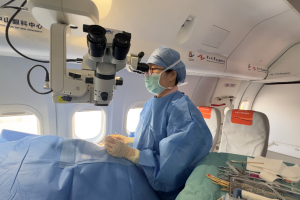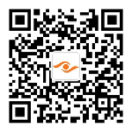
Resource: National Key Laboratory of Ophthalmic Disease Prevention and Treatment
Proofread by: Jiawei Wang
Reviewed by: Lingyi Liang
Edited by: Xianjing Wei
On July 25, 2023, the internationally top-ranked journal "Ophthalmology" published online an original academic article by Professor Zhang Xiulan's team at Zhongshan Ophthalmic Center, Sun Yat-sen University, entitled "High Myopia Normative Database of Peripapillary Retinal Nerve Fiber Layer Thickness (pRNFLT) to Detect Myopic Glaucoma in the Chinese Population." This marks the fifth original full-length article published by the team in the Ophthalmology journal since August 2021.
This study established a large normative pRNFLT database for the highly myopic Chinese population. Its efficacy in distinguishing high myopia with glaucoma notably supersedes that of non-high myopia specific databases, promising to provide an effective reference and convenient tool for the diagnosis and screening of glaucoma in patients with high myopia.
|
|
|
Figure 1 research article published in Ophthalmology, with Zhongshan Ophthalmic Center, Sun Yat-sen University as the first authorial unit, first author, and final correspondence author. |
High myopia has become one of the primary causes of blindness globally. By 2050, the worldwide population of individuals with high myopia will grow to 9.38 billion. The risk of glaucoma in high myopia patients is 2.92—7.3 times that of the general population, and high myopia often accompanies retinal changes similar to those of glaucoma, such as thinning of the RNFL, rendering differential diagnosis between high myopia and glaucoma exceedingly challenging. Utilizing OCT to measure pRNFLT is an indispensable examination for diagnosing glaucoma, yet current OCT devices lack specific pRNFLT normative databases for high myopia, leading to a high false-positive rate in differential diagnosis between high myopia and glaucoma, resulting in misdiagnosis and overtreatment.
This research utilized a sample of 1634 individuals with high myopia and suspected glaucoma from Glaucoma Suspects with High Myopia cohort (GSHM cohort). Following strict quality control, 894 individuals (1108 eyes) were ultimately chosen to establish a normative database for highly myopic pRNFLT (see Figure 2 below). Then, the diagnostic efficacy of this database was compared with the OCT built-in database in the internal validation set (459 eyes) from Zhongshan Ophthalmic Center, and the external validation set (322 eyes) composed of data from Shanghai, Hong Kong, and Singapore (see Figure 3). Utilizing the 5th percentile as the cutoff value, the diagnostic accuracy of the high myopia-specific database reached 0.93 (internal validation) and 0.85 (external validation), both significantly higher than the built-in database (both ps < 0.05), with sensitivity reaching 0.75 and specificity nearly 1.00, effectively reducing the false-positive rate in differentiating high myopia from glaucoma (see Figure 4). This research first defined the reference range of pRNFLT for the highly myopic Chinese population within the Asian region, offering significant reference indicators for clinical practitioners using OCT to distinguish high myopia from glaucoma.
|
|
|
Figure 2 Normative database of pRNFLT in Chinese myopic database Global (A), temporal (B), superior (C), nasal (D), and inferior (E) quadrant pRNFLT The green color indicated the thickness is between the 5%~95% reference value. The yellow color indicated the thickness between the 1%~5% reference value, and the red showed the thickness < 1% reference value. |
|
|
|
Figure 3 Flowchart of the study |
|
|
|
Figure 4: Examples of newly developed database and device built-in database diagnoses A-C, D-F: OCT reports and field of vision reports for two cases of high myopia without glaucoma patients. The machine database indicates the red as RNFLT deficiency, yet according to the newly developed database, the RNFLT is within the normal range. |
Professor Zhang Xiulan, in 2019, collaborated with 13 experts in high myopia, glaucoma, and epidemiology from 7 countries to form the Glaucoma Suspects with High (GSHM) Study Group), initiating a series of clinical studies aiming to provide a novel evidence-based medical foundation for the diagnosis and treatment of high myopia and glaucoma. This series of research has received robust support from the Clinical Research Center at Zhongshan Ophthalmic Center, and funding from National Key R&D Program Project, as well as the High-level Hospital Construction Project. To date, the series has published 13 related high-level papers, including two in the top-tier journal Ophthalmology, and has been granted two invention patents.
This international multicenter study, led by Zhongshan Ophthalmic Center, was co-authored by 27 researchers from renowned ophthalmic institutions in Shanghai Jiao Tong University, The Chinese University of Hong Kong, Singapore National Eye Center, the United States, Germany, Japan, and others. It stands as yet another achievement in high-quality scientific research output in Zhongshan Ophthalmic Center's international collaborations. The corresponding authors of this paper are Xiulan Zhang (Zhongshan Ophthalmic Center, last correspondence), Shida Chen (Zhongshan Ophthalmic Center), Carol Y. Cheung (The Chinese University of Hong Kong), Xiaodong Sun (Shanghai First People's Hospital) (Figure 5). The first authors are Yunhe Song (Zhongshan Ophthalmic Center), Fei Li (Zhongshan Ophthalmic Center), Rachel S. Chong (Singapore National Eye Center), Wei Wang (Zhongshan Ophthalmic Center) (Figure 6).
|
|
Zhongshan Ophthalmic Center Xiulan Zhang Professor |
|
|
Zhongshan Ophthalmic Center Shida Chen Associate Professor |
|
|
The Chinese University of Hongkong Carol Y. Cheung Associate Professor |
|
|
Shanghai General Hospital Xiaodong Sun Professor |
|
Figure 5 Co-corresponding authors of the research article |
|
|
|
Zhongshan Ophthalmic Center Yunhe Song Postdoc |
|
|
Zhongshan Ophthalmic Center Fei Li Research fellow |
|
|
Singapore National Eye Centre Rachel S. Chong Associate Professor |
|
|
Zhongshan Ophthalmic Center Wei Wang Research fellow |
|
Figure 6 First authors of the research article |
|
Participation in this research was also extended to Professor Robert N. Weinreb and Linda M. Zangwill from the Shiley Eye Institute at the University of California, San Diego; Professor Neil M. Bressler from Johns Hopkins University; Professor Jost B. Jonas from Mannheim Medical School, Heidelberg University, Germany; Professor Tin Aung and Ching-yu Cheng from Singapore National Eye Center; Professor Dennis S.C. Lam from Hong Kong C-MER Eye Care Holdings Limited; Professor Clement C. Tham from The Chinese University of Hong Kong (Figure 7).
|
|
|
|
|
|
Robert N. Weinreb |
Linda M. Zangwill |
Neil. M. Bressler |
Jost B. Jonas |
|
|
|
|
|
|
Tin Aung |
Ching-yu Cheng |
Dennis S.C. Lam |
Clement C. Tham |
|
Figure 7 Renowned experts collaboratively participate in the research. |
|||
Link of the article:https://www.aaojournal.org/article/S0161-6420(23)00518-3/fulltext











